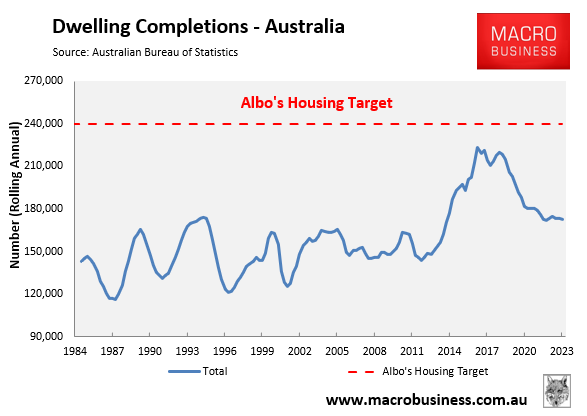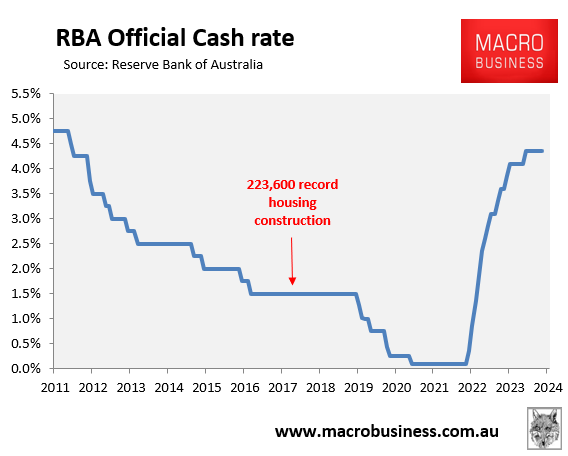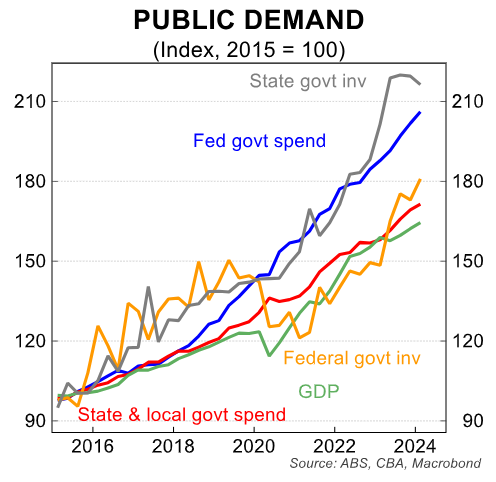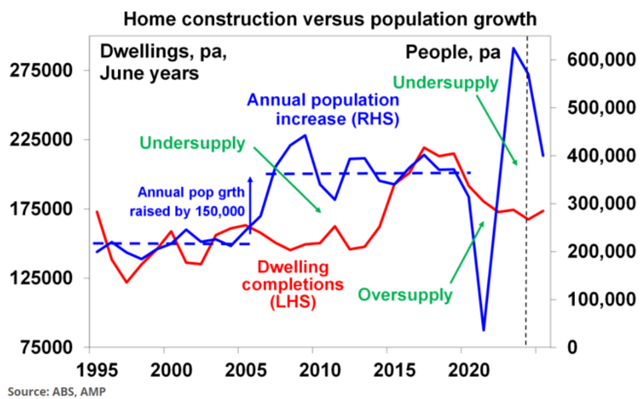The Australian Financial Review’s latest quarterly property survey has found that property experts believe that the supply of new homes is being ‘choked’ by high interest rates and construction costs, making the national target of 1.2 million new homes over five years unachievable.
High construction costs are among a range of factors that have pushed up the cost of building in most capital cities at a faster rate than house price growth, making it less economical to build new dwellings relative to purchasing an established home.
CoreLogic research director Tim Lawless noted that “the price of construction is not falling and building or renovating remains almost 30% more expensive now than pre-COVID after an extended period of escalating costs”.
SQM Research founder and managing director Louis Christopher warned that “right now, we are not seeing any indicators housing supply is about to rise”, and has “forecast completions for FY25 coming at just 138,000 new dwellings”.
Advertisement
PropTrack executive manager for economic research Cameron Kusher noted that building approvals were tracking at decade-low levels, with new construction “hampered by significant increases in construction costs since the onset of the pandemic, labour shortages, and interest rates at their highest level in 12 years”.
“The surge in construction costs has widened the price premium for new housing over existing housing. For new housing to become more attractive, the price gap between new housing and existing housing needs to close”, he said.
Finally, Ben Burston, chief economist at Knight Frank, warned that “the restoration of high levels of housing construction will be a slow grind” amid steep rises in construction and funding costs.
Advertisement
Indeed, the latest data from the Australian Bureau of Statistics (ABS) showed that only 163,800 homes were approved for construction in the year to May, 76,200 (32%) below the Albanese government’s 240,000 housing target.
It is also important to stress that the Albanese government’s target of building 240,000 homes annually has never been achieved before:
Advertisement

The most homes ever built in a 12-month period was 223,600 in 2017, which was 7% lower than Labor’s target level of 240,000 homes.
This level of completions was achieved when the official cash rate was only 1.5%, versus 4.35% currently:
Advertisement

The 2017 record level of completions was also achieved when building costs were around 40% lower than they are currently:

Advertisement
Home builders in 2017 also were not competing for workers with state government ‘big build’ infrastructure projects:

Finally, insolvency data from the ASIC shows that nearly 3,000 construction firms collapsed in the 2023-24 financial year, suggesting that productive capacity has been reduced in the home building industry.
Advertisement
Put simply, macroeconomic conditions are highly unconducive to meeting the Albanese government’s lofty housing targets, meaning that dwelling completion rates are likely to remain suppressed for the foreseeable future.
Ultimately, the only genuine solution to Australia’s housing shortage is to slash net overseas migration so that population demand runs below that nation’s capacity to supply housing and infrastructure.

Advertisement
Otherwise, Australia’s housing shortage will continue to worsen.


